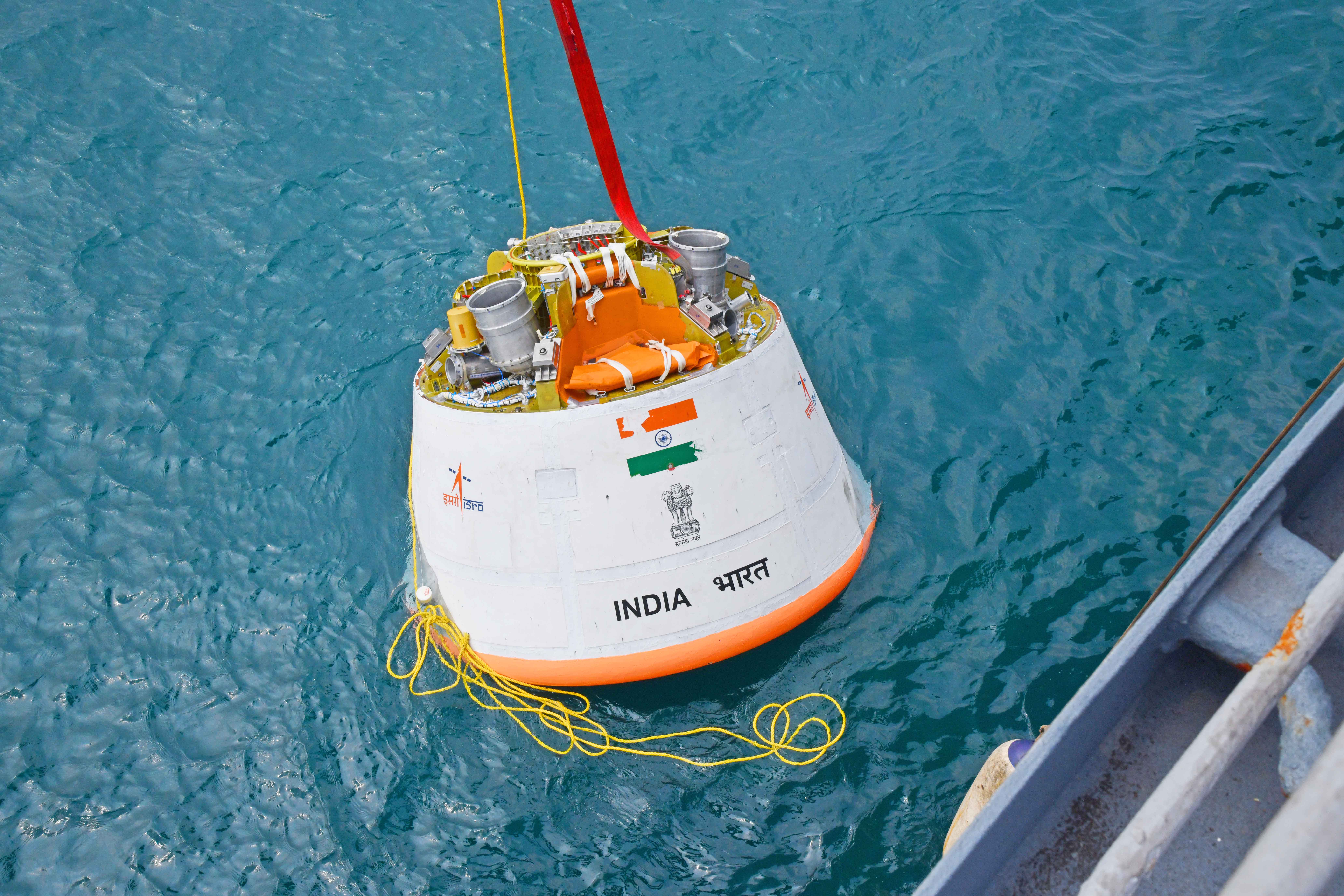October' 23
October 6: GALACTIC 04 MISSION
On October 6, 2023, a Virgin Galactic SpaceShipTwo rocket launched the Galactic-04 mission. The three private astronauts aboard 'Galactic 04' brought different backgrounds and cultures to the mission, along with a shared passion for space, exploration, and adventure. SpaceShipTwo was a rocket-powered space plane that launched from under the wing of a carrier aircraft. It used a hybrid rocket engine to boost itself up to beyond the edge of space, providing paying passengers with a few minutes of weightlessness Virgin Galactic is an aerospace and space travel company, pioneering human spaceflight for private individuals and researchers with its advanced air and space vehicles

October 13: Psyche spacecraft Mission
The mission explores the origin of planetary cores by studying the metallic asteroid 16 Psyche on a Falcon Heavy launch vehicle.Psyche, NASA's mission aimed at studying the metal-rich asteroid of the same name in the main asteroid belt between Mars and Jupiter, marked a significant venture into asteroids with a higher metal content than rock or ice. Launched on October 13, 2023, from Kennedy Space Center aboard a SpaceX Falcon Heavy rocket, Psyche represented the first in a series of NASA science missions to be the primary payload on this rocket.Scheduled to be captured by Asteroid Psyche's gravity in late July 2029, the spacecraft would initiate its prime mission in August. Over approximately two years, Psyche would orbit the asteroid, conducting tasks such as capturing images, mapping the surface, and collecting data to determine Psyche's composition. We can’t bore a path to Earth’s metal core – or the cores of the other rocky planets – so visiting Psyche could provide a one-of-a-kind window into the violent history of collisions and accumulation of matter that created planets like our own. This was NASA's first mission to study an asteroid that had more metal than rock or ice.

October 14: Ring of Fire
The ‘Ring of Fire’ solar eclipse marked its presence on this day making it one of the most significant events of October 2023. The eclipse occurred when the Moon was at its farthest point from Earth during alignment with the Sun, creating the distinctive "Ring of Fire" effect due to the Moon not completely blocking the Sun. Due to the annular solar eclipse a fiery, reddish, and orange aura was cast on the fringes of the moon.During an annular solar eclipse, the moon appeared slightly smaller than the sun, preventing it from blocking the entire disk. The result was a beautiful "ring of fire." It was unfortunate that the "Ring of Fire" was not visible from India; the Moon's shadow only passed over North and South America.This was the last annular solar eclipse that will be visible from the US until June 21, 2039.. This celestial event offered a unique opportunity to observe the Sun's outer atmosphere, the corona, which is typically obscured by the Sun's brightness.
October 21: ADVANCES IN THE GAGANYAN MISSION
Crew Module sub-systems and Crew Escape System performed as intended, in the first Test Vehicle Mission (TV-D1), accomplished on 21st October, 2023. The Indian Space Research Organisation (ISRO) successfully conducted the 'TV-D1' test vehicle mission as part of the Gaganyaan program. The purpose of the mission was to demonstrate the crew escape system, which performed well. The test vehicle simulated the abort condition during the ascent trajectory and successfully showcased the functionality of the Crew Escape System. This mission was a significant milestone in India's efforts to send humans into space, and the country's ambitious goals included setting up an Indian Space Station by 2035 and sending the first Indian to the Moon by 2040.The crew escape system took the crew module away from the vehicle, and subsequent operations, including the touch-down at sea, were very well accomplished, as confirmed by the ISRO Chairman. The mission objectives of the TV-D1 launch were the flight demonstration and evaluation of Test Vehicle subsystems, the flight demonstration and evaluation of the Crew Escape System, including various separation systems, crew module characteristics, and the demonstration of the deceleration system at higher altitudes and its recovery.

October 25: ISS Radiator leak solved
Russian cosmonauts Oleg Kononenko and Nikolai Chub wrapped up a nearly 7-hour spacewalk at the International Space Station (ISS) with an array of intriguing tasks. Their mission included unfurling two solar panels on a mini radar system that hadn't deployed properly, showcasing their expertise in the complexities of outer space. During the spacewalk, the cosmonauts pinpointed the source of a radiator leak on the Nauka module, encountering a growing "blob" of coolant, a challenge that required quick thinking and adaptability. The radiator's panels revealed mysterious, evenly drilled holes, adding an unexpected twist to their extraterrestrial venture. Despite contamination challenges, the cosmonauts adeptly managed the situation, using tissues and cloths as preventative measures. The data collected will aid Russian engineers in investigating the radiator leak's cause. Beyond this, Kononenko and Chub achieved milestones by installing a synthetic radar system and releasing a nanosatellite to test solar sail technology. As they closed the hatch, concluding their 7-hour, 41-minute spacewalk, their accomplishments marked a significant chapter in ongoing cosmic exploration.

October 2-November 7: Orionid meteor shower
From October 2 to November 7, the night sky treated astronomers to a celestial extravaganza with the enchanting Orionid meteor shower. The peak performance unfolded on the magical nights of October 21-22, beckoning sky gazers to venture out after the stroke of midnight. These meteoric wonders, believed to be fragments of the famed comet 1P/Halley, showered the heavens in a dazzling display. As streaks of brilliance cut across the darkness, the cosmos seemed to whisper the secrets of Halley's comet. Each meteor was a fleeting piece of history, carrying with it the legacy of a cosmic traveler that has fascinated humanity for generations. Under the celestial dance of the Orionids, astronomers and dreamers alike found themselves captivated by the beauty written in the stars during this celestial spectacle
:quality(70)/cloudfront-us-east-1.images.arcpublishing.com/cmg/PH3NMQHHYZHNLHITAMHJSK6XL4.jpg)
